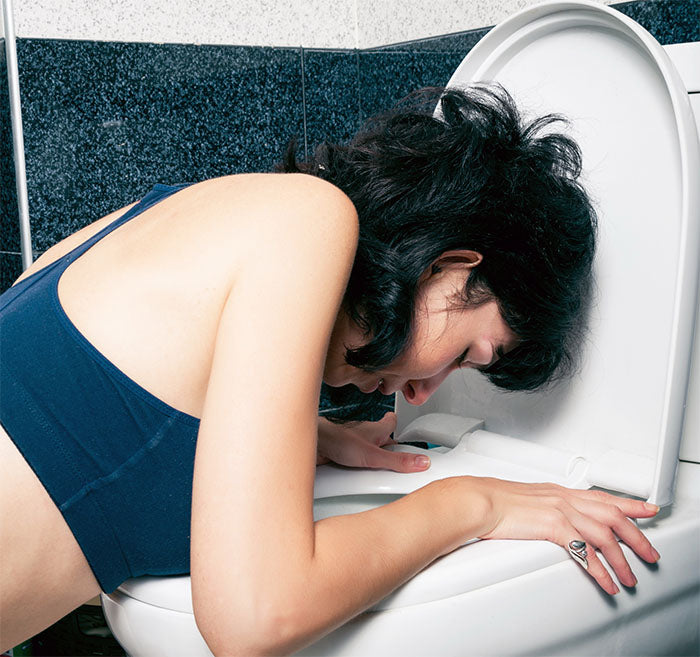Recognizing Signs and Symptoms of a Diabetes Emergency
What is a Diabetic Emergency? These are critical situations that involve the emergency room for diabetes management and require immediate attention because they can be life-threatening.1

Name for your product
- Regular price
- $19.99
- Sale price
- $19.99
- Regular price
-
The two most common emergencies, sometimes called "hyperglycemic attacks," are diabetic ketoacidosis (DKA) and hyperosmolar hyperglycemic state (HHS). Severe hypoglycemia (glucose levels below 58 mg/dL) is another key concern.2
DKA is most common in type 1 diabetes emergencies, while HHS is more often seen in people living with complications of type 2 diabetes.3 However, either condition can affect anyone with diabetes. These diabetic emergencies share a key underlying problem: insufficient insulin, which prevents the body from correctly processing sugar.1 Healthcare providers use blood tests and symptom evaluation to differentiate between DKA and HHS and inform treatment decisions.4

What are the Signs of Hypoglycemia?
Symptoms of hypoglycemia include trembling, sweating, nausea, tingling, confusion, weakness, headache, and dizziness.2 People with severe hypoglycemia are usually unable to take fast-acting sugar (20 g carbohydrate) on their own to help manage these symptoms and require assistance from someone else.2 If someone is unconscious, a diabetic emergency kit should be used when there is a medical emergency, and emergency services should be called.5
Recurrent episodes of hypoglycemia can lead to hypoglycemia unawareness, where symptoms go unnoticed, necessitating frequent blood sugar checks.5

What are the Warning Signs of Diabetic Ketoacidosis?4
Along with the signs of hyperglycemia, DKA symptoms include the feeling of being unable to get enough oxygen, nausea, vomiting, and abdominal pain.
DKA risk factors include heart attack, infection, physical trauma, or inadequate insulin. These factors can quickly trigger DKA, necessitating the need for early recognition and swift management.

What i s Hyperosmolar Hyperglycemic State?
HHS typically includes neurological signs such as vision problems or delirium.3 Other symptoms include increased urination and dehydration, as well as weakness and lethargy.3 HHS may gradually occur over the course of several days or weeks.1
HHS can begin to develop with the use of medications such as diuretics, glucocorticoids (a type of steroid), and some psychiatric medications.4 In rare cases it can follow cardiac surgery. People living with diabetes should regularly monitor their high blood sugar during these periods.

Sick Day Guidelines for Diabetes
When you're sick, managing diabetes requires extra care. Along with your established sick-day plan, consider these additional tips:
- Work with your provider to adjust your medication if your appetite or routine changes.7
- If you're not up for full meals, try to have small amounts of carbohydrates to maintain energy.7
These extra measures can help you stay on track and prevent complications during illness. If your symptoms worsen or you're unsure about changes in your blood sugar levels, contact your healthcare provider promptly.
Having a blood glucose meter on hand can provide quick and accurate blood glucose readings, essential for making informed decisions during the symptoms of a diabetic emergency.
Explore purchasing options for all Blood Glucose Monitoring Systems
Explore purchasing options for all Blood Glucose Test Strips
Explore purchasing options for all CONTOUR®NEXT Bundles
Explore purchasing options for all Complementary Diabetes Products
Explore purchasing options for KETOSTIX® and Other Diabetes Testing Supplies
References:
- Gosmanov AR, Gosmanova EO, Kitabchi AE. Hyperglycemic crises: diabetic ketoacidosis and hyperglycemic hyperosmolar state. [Updated May 9, 2021]. In: Feingold KR, Anawalt B, Blackman MR, et al., editors. Endotext [Internet]. South Dartmouth (MA): MDText.com, Inc.; 2000. Available from: https://www.ncbi.nlm.nih.gov/books/NBK279052.
- Diabetes Canada Clinical Practice Guidelines Expert Committee; Yale JF, Paty B, Senior PA. Hypoglycemia. Can J Diabetes. 2018;42 Suppl 1:S104-S108. doi: 10.1016/j.jcjd.2017.10.010.
- Adeyinka A, Kondamudi NP. Hyperosmolar Hyperglycemic Syndrome. August 12, 2023. In: StatPearls [Internet]. Treasure Island (FL): StatPearls Publishing.
- Canadian Diabetes Association Clinical Practice Guidelines Expert Committee; Goguen J, Gilbert J. Hyperglycemic emergencies in adults. Can J Diabetes. 2013;37 Suppl 1:S72-6. doi: 10.1016/j.jcjd.2013.01.023.
- Diabetes Canada. Mild, moderate, or severe hypoglycemia - what's the difference? Diabetes Canada. Available from https://www.diabetes.ca/managing-my-diabetes/stories/mild,-moderate-or- severe-hypoglycemia---what-s-the-difference-. Published 2024. Accessed December 8, 2024.
- Aldhaeefi M, Aldardeer NF, Alkhani N, et al. Updates in the management of hyperglycemic crisis. Front Clin Diabetes Healthc. 2022;2:820728. doi: 10.3389/fcdhc.2021.820728.
- Ignite Healthwise, LLC Staff. (2024, April 30). Sick-day guidelines for people with diabetes. Sick-Day Guidelines for People With Diabetes | Kaiser Permanente. https://healthy.kaiserpermanente.org/health-wellness/health-encyclopedia/he.sick-day-guidelines-for-people-with-diabetes.uq2659spec


